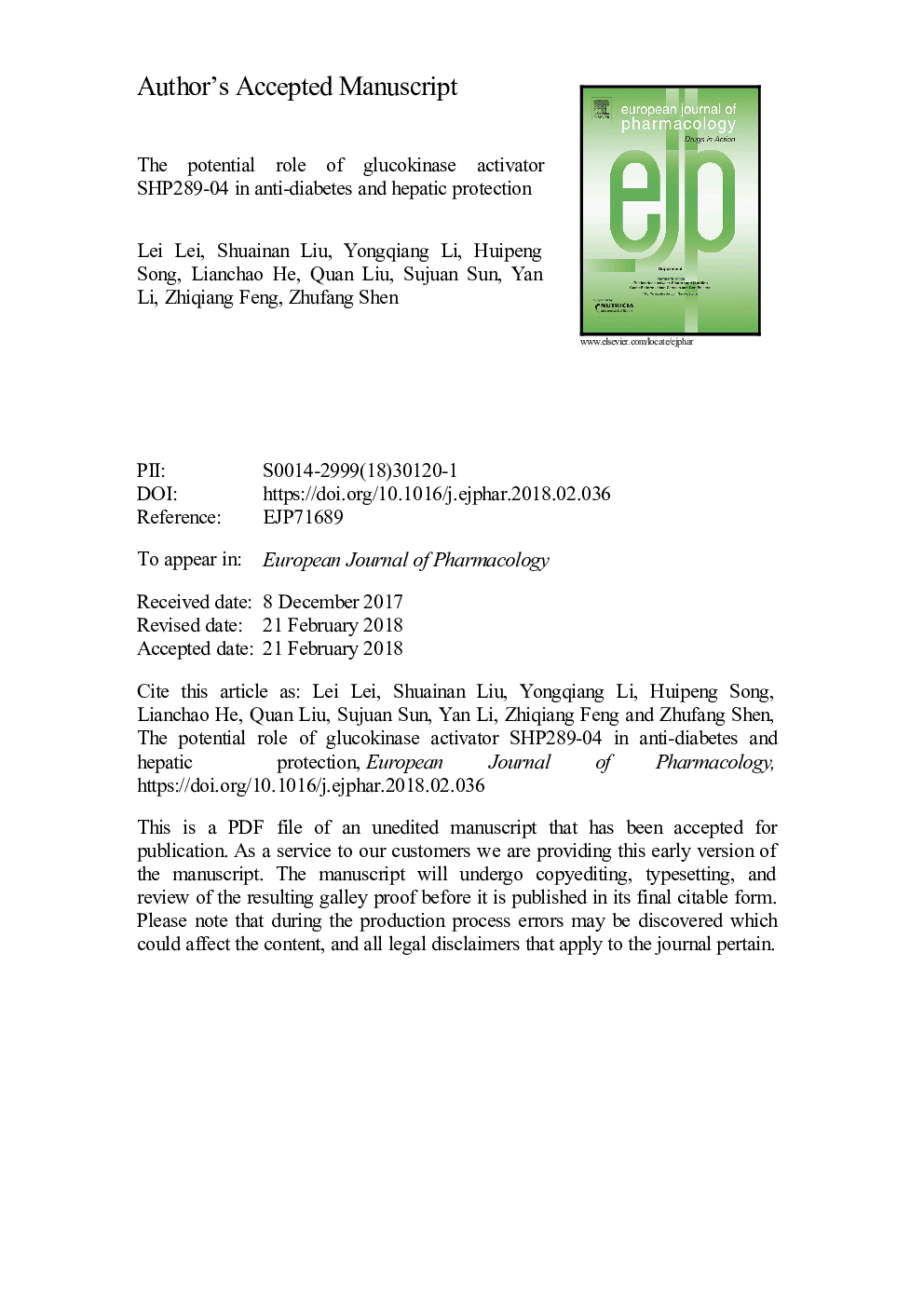| Article ID | Journal | Published Year | Pages | File Type |
|---|---|---|---|---|
| 8529187 | European Journal of Pharmacology | 2018 | 27 Pages |
Abstract
Glucokinase was glucose sensor in hepatocytes and islet beta cells. It not only promoted glucose metabolism, but also advanced glucose-stimulated insulin secretion. Glucokinase activators had been reported as one kind of new potential drugs for treatment of type 2 diabetes. Compound 6-(5-(3-fluorobenzyloxy)â2-ethoxybenzamido) pyridine-3-carboxylic acid (SHP289-04) was found to increase glucokinase activity effectively by our lab. In order to demonstrate its effect of anti-diabetes, in vitro, human liver carcinoma cell line HepG2 was used to glucose consumption test, and pancreatic cell line NIT-1 was used to assess insulin secretion in response to different concentration of glucose (5â¯mmol/l and 20â¯mmol/l). Type 2 diabetes model KKAy mice were chose to evaluate the pharmacodynamics of SHP289-04 in vivo. In hepatocytes, SHP289-04 could accelerate glucose consuming. In NIT cell line, it promoted glucose-stimulated insulin secretion at the 20â¯mmol/l of glucose. Moreover, it normalized oral glucose tolerance test and down-regulated blood lipid level in KKAy mice. At the same time, it ameliorated function of islets and accelerated the ratio of beta cell/alpha cell mass, and also alleviated the fatty liver of KKAy mice. Therefore, SHP289-04 as a glucokinase activator had the potential effect of diabetes treatment.
Related Topics
Life Sciences
Neuroscience
Cellular and Molecular Neuroscience
Authors
Lei Lei, Shuainan Liu, Yongqiang Li, Huipeng Song, Lianchao He, Quan Liu, Sujuan Sun, Yan Li, Zhiqiang Feng, Zhufang Shen,
